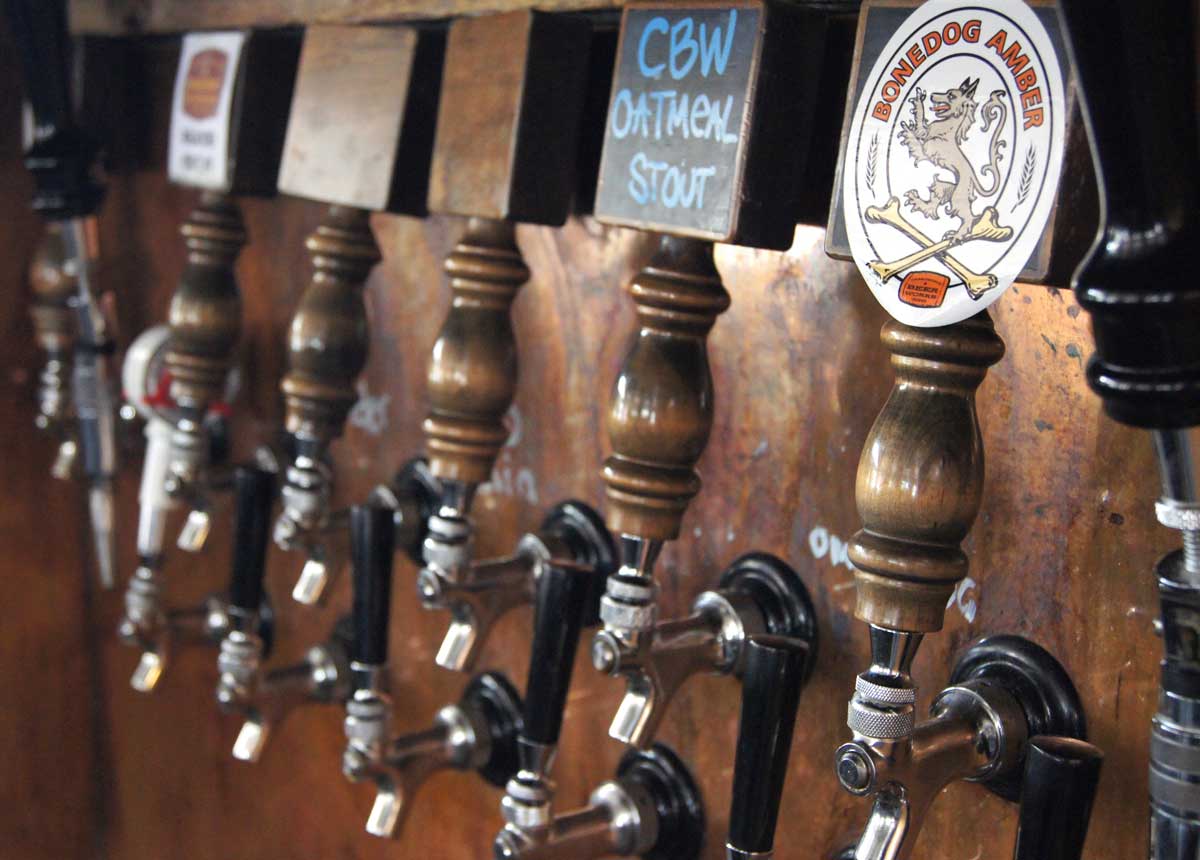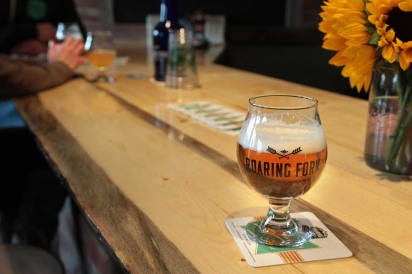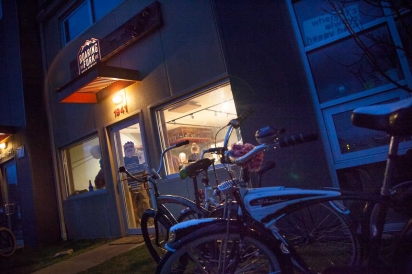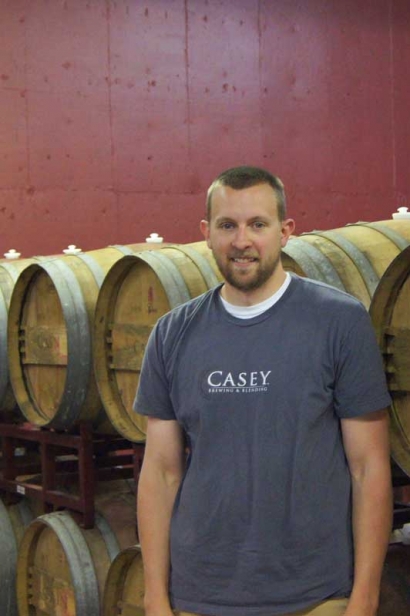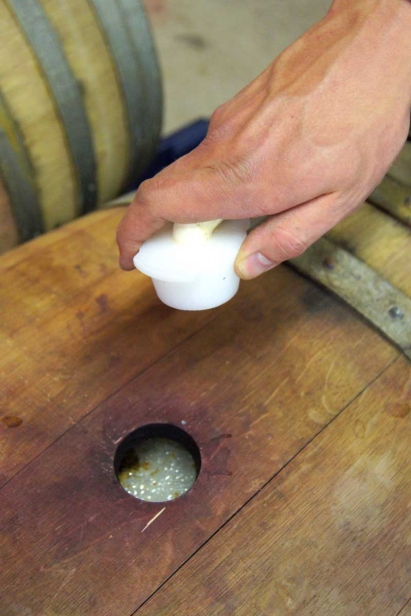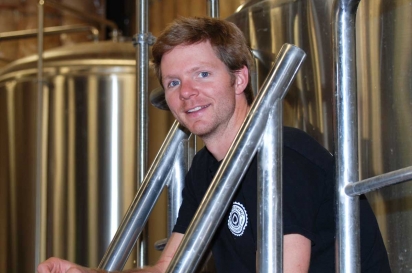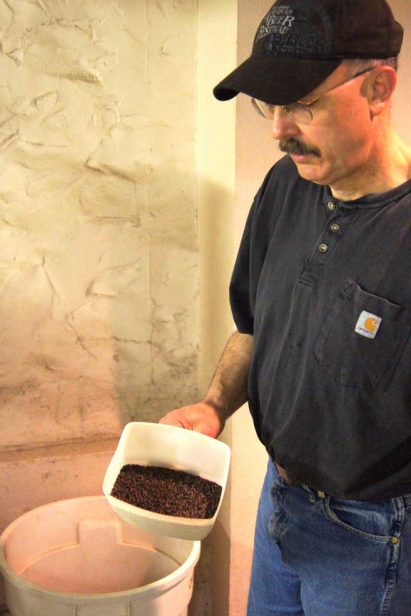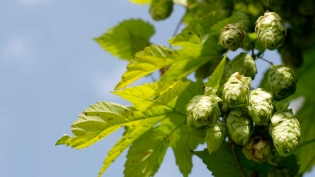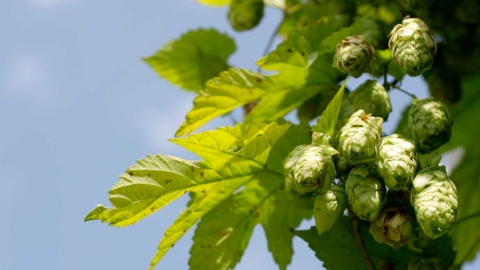The Sultans of Suds: The Brewers Behind Roaring Fork Valley's Craft Beer Boom
If Colorado’s craft beer industry is enjoying a Golden Age, then the Roaring Fork Valley, which now has more breweries than towns, is on the leading edge of the state’s suds obsession.
The Colorado Brewers Guild counted a whopping 232 craft breweries in Colorado last year, and the five brewers now operating in the Valley—with their wildly diverse tastes and techniques—are a microcosm of the statewide scene. Here, we introduce you to all of them, and explore the creative and collaborative spirit that imbues this buzzing industry.
“A rising tide of interest in craft beer lifts all boats,” says Ken Jones of the Glenwood Canyon Brewing Co. “It’s been gratifying to see that there’s still a lot of camaraderie in the industry.”
We’ll drink to that.
The Man (with a Beer) for All Seasons:
Chase Engel of Roaring Fork Beer Co.
GOTTA DRINK: Roaring Fork Slaughterhouse Lager (American pilsner, summer seasonal)
DESERT ISLAND BEER: Victory Prima Pils, Victory Brewing Co., Downingtown, PA
BREWING WISDOM: “Being a perfectionist never hurts.”
Chase Engel is only 31 years old but he’s been brewing long enough to know that inventing creative new seasonal beers is much more fun than brewing the same tired list of unchanging ales for months on end.
Armed with that knowledge—hard won through nearly a decade of work at such luminary Colorado microbreweries as Ska Brewing in Durango, Oskar Blues in Longmont and the Aspen Brewing Co.—Engel has made constant experimentation with seasonal beers the cornerstone of his business model at the recently founded Roaring Fork Beer Co. in Carbondale.
So far, thirsty locals are drinking it up. “We opened at the end of March, and the tasting room has been slammed,” Engel says.
With a curly mop of brown hair, bright blue eyes and a casual, slope-shouldered posture, Engel looks even younger than his age, but the brand he’s building in Carbondale with the help of his wife, Aly Sanguily, and assistant brewer Jerod Day is far from the work of a novice.
At the center of Roaring Fork’s offerings are two flagship canned beers: the Freestone Extra Pale Ale and an English Pub Ale injected with nitrogen instead of carbon dioxide to produce a smooth mouthfeel and foamy head. Around those standbys, though, Engel plans to introduce at least three new beers complementing the climate of every Colorado season—that’s 12 new beers a year. Among his initial offerings last spring were a Farmhouse Wit, a Spring IPA and a surprisingly refreshing Oatmeal Pale Ale. This summer, fans are anticipating the release of his Slaughterhouse Lager, a pilsner that represents Engel’s take on a classic American “river beer” and requires more than twice the fermentation time of typical ale.
Its focus on seasonal experimentation aside, Roaring Fork is also distinguished by a hyper-local business model.
“If I can help it, I don’t want to sell beer outside of this Valley,” says Engel, explaining his theory that staying small will allow him to preserve his creative freedom at the brewing kettle. “We don’t want to overextend and go to Denver and only have the capacity to brew the same two beers all the time.”
Although Roaring Fork beer is available on tap at a rapidly growing list of bars and restaurants throughout the Valley, a visit to the artfully refinished tasting room next door to the brewery is also well worth the trip.
With a bar and tables hewn from reclaimed barn wood and beetle-kill pine, Roaring Fork’s tasting room isn’t your typical bar, and its abbreviated hours—2–8 p.m. on weekdays and noon–6 p.m. on Saturdays—reflect that.
Yet Engel imposed the early schedule for a reason: The point of the tasting room is beer appreciation, not drunken inebriation.
“I have a daughter [1-year-old Harlow], and I want a place where I can feel comfortable taking her,” Engel says.
Engel and Sanguily are themselves busy putting down roots in the Roaring Fork Valley, and their business model reflects their communal focus: In exchange for investing up front in the brewery just as a community-supported agriculture (CSA) customer might invest in a farm, the pair offers customers tasting room discounts, brewery paraphernalia, access to exclusive events and the privilege of tasting small-run “members only” seasonal beers.
“You support us…” reads a description of the membership program on the company’s website, “we support you.” Cheers to that.
The Innovator:
Troy Casey of Casey Brewing and Blending
GOTTA DRINK: Casey’s Classic Saison, a dry, tart beer that features notes of orange peel, banana, red apple and bubble gum.
DESERT ISLAND BEER: Coors Banquet beer, or Sierra Nevada Pale Ale
BREWING WISDOM: “Brewing is a lot of work, for not a lot of money. Last First Friday [Carbondale’s monthly celebration] I was cleaning up hops and my friends were out drinking—if you can’t smile while you’re doing that, you shouldn’t be in this business!”
In a cavernous Glenwood Springs warehouse perched on the northern bank of the Roaring Fork River, Troy Casey pulls a nail from a 59-gallon French oak barrel, and a golden stream of beer pours forth.
“This still has a couple of months left to ferment, but there should be some interesting flavors developing,” says Casey, a tall and sturdy 30-year-old with a buzz cut and a mellow, friendly manner, as the snifter he’s holding fills with beer.
I raise the glass to my lips and immediately am hit with dry flavors of apple, citrus and a hint of oak.
“The barrels are neutral, so they don’t impart a really strong oak flavor,” Casey says. “For me, using oak is both necessary and romantic.”
All of Casey’s beers are aged in oak barrels, where they ferment—some for six months or more—with the help of wild yeasts like Brettanomyces and Lactobacillus that impart the beer with light acidity and citrus notes. Casey is the first brewer in the Roaring Fork Valley to specialize exclusively in sour beers modeled after traditional Belgian styles. In craft brewing circles, sours are rapidly supplanting IPAs as the beers of the moment, and Front Range breweries like Denver’s Crooked Stave and Funkwerks in Fort Collins have gained widespread acclaim for their takes on this ancient brewing tradition. Yet Casey’s decision to locate in Glenwood Springs—he left a career at mega-brewer AC Coors in Golden to start his own company late last year—is a major feather in the cap of the Western Slope craft beer scene.
“It’s a big risk to do this here rather than in Denver, but the beers I’m doing are suited to this [relaxed] environment,” says Casey, who followed his fiancée to Glenwood Springs after she was hired as human resources director at the Roaring Fork Whole Foods. “You can’t rush these beers, and how the brewer feels will influence the beers they make.”
Casey’s first offering, the classic Belgian Saison that I tasted, should debut at the taproom in his headquarters by late June, while a golden sour done in the style of a Belgian Lambic will follow soon after.
“I’m putting things into my beer that other brewers try to keep out,” says Casey, explaining that his process depends heavily on blending the contents of different barrels to achieve flavors that exist only in his head.
“Blending is the art of 1+1=3, Casey says. “Each barrel I make has the same ingredients, but factors like its location in the room or the thickness of the barrel can affect the flavor. If you find a barrel you really like, you can use that as the base barrel and add from other barrels that have flavors you want.”
As if specializing in sours weren’t unique enough, Casey will also be the only brewer in Colorado who uses entirely instate ingredients, including grains from the Colorado Malting Co. in Alamosa and hops from farms like Simply Grown in Palisade. He even contracted with a farmer in Hotchkiss to plant 100 new cherry trees for him this spring, which he’ll incorporate into barrel-aged beers down the line. And he’ll rely on Chase Engel at Carbondale’s Roaring Fork Beer Co. to brew his wort—the unfermented mix of water, malted grain and hops that’s the base of all beer—according to Casey’s own carefully calibrated recipes.
“It’s a symbiotic relationship between Chase and I, and I have no problem subbing out the brewing to someone else,” Casey says. “I specialize in the fermentation.”
The Entrepreneur:
Duncan Clauss of Aspen Brewing Co.
GOTTA DRINK: Aspen Brewing Co. Double Conundrum Imperial Red Ale (fall seasonal)
DESERT ISLAND BEER: “The Aspen Brewing Saison would be perfect, since it’s refreshing but also high in alcohol. Otherwise, anything from Odell’s Brewing Co. in Ft. Collins or Funkwerks or Crooked Stave in Denver.”
BREWING WISDOM: “Attention to detail and cleanliness are essential in brewing.”
There are lots of ways to measure success in the craft beer industry, but here’s one: When I walk into the Aspen Brewing Co.’s manufacturing plant in the Aspen Airport Business Center, about 205,000 empty cans labeled with the brewery’s logo are stacked 24 feet high in the corner, waiting to be filled.
Within days, they’ll be full of beer and on trucks headed for liquor stores from Aspen to Glenwood Springs and Fort Collins to Pueblo. In recent years, Aspen Brewing Co. has expanded from its modest Hopkins Avenue taproom to supply its signature blond ale and IPA to drinkers across much of the state.
Duncan Clauss, a wiry 29-year-old whose habitual jeans and flip flops make him look more like a clean cut ski bum in repose than the brewery’s founder and CEO, greets me and quickly fills me in on the reason for his extensive inventory of cans.
“We doubled in size when we moved into this space [in 2013], and we’re set to double again for 2014,” he says. We produced 1,700 barrels of beer in 2013, and expanded to 4,000 in 2014.”
Compared to mass-market beers like MillerCoors and Budweiser, Aspen Brewing Co. remains tiny, but the company is now big enough that Clauss orders cans in batches of 205,000.
“When they come, they take up a whole semi-truck,” he explains. Clauss’ beer has been popular since he founded the brewery in 2008, but the meteoric pace of growth this past year—and the company’s projected expansion through 2016—seem to surprise even him.
“I’m blown away that there continues to be so much growth in this industry, and I think it’s tied into the local food movement,” he says. “Local food, local beer, local bikes. People are seeing the benefits in locally made stuff.”
The Aspen brand is built on the idea of brewing classic beer styles well, rather than reinventing what good beer should taste like. Aspen Brewing has five year-round flagship beers—a blonde, an IPA, a red ale, a brown ale and a porter—and embellishes that line with a series of seasonals including a summer pilsner, an Imperial Red in the fall, a winter imperial stout and a springtime Belgian Saison that won a silver medal at the Great American Beer Festival last year and a gold at the 2014 World Beer Cup.
Clauss’ success is built on humble home brewing origins: As a student at the University of Colorado at Boulder, he says, he was “blown away” by the beers on offer at Front Range outfits like Odell’s Brewing Co. of Fort Collins, and decided to try his own hand at the mysterious art of fermentation.
When he moved to Aspen after college, he realized that the town had been without a microbrewery for 15 years despite the fact that neighboring Summit County was home to at least five of them.
“It seemed like every little mountain town had its own brewery, besides Aspen,” he recalls. “And I was looking for a way to move to Aspen, stay here and not just be a ski bum. So I opened the brewery.”
As Aspen Brewing Co. continues to grow, Clauss says he’s determined to balance the inevitable repetition of manufacturing with a healthy dose of seasonal experimentation.
“The seasonal and specialty beers are where [head brewer] P.J. [Goudreault] gets to be creative,” Clauss says. “Beer is part manufacturing and part craft—your IPA needs to taste the same every time, but the artistry comes from taking a new recipe all the way from concept to pint glass.”
The Veteran:
Ken Jones of the Glenwood Canyon Brewing Co.
GOTTA DRINK: Glenwood Canyon Brewing Vapor Cave IPA, an English-style IPA with an assertive hop flavor and a dry finish.
DESERT ISLAND BEER: Anchor Porter, Anchor Brewing Co., San Francisco, Calif.
BREWING WISDOM: “I think a lot of brewers are Type B personalities [laid back, collaborative, steady workers]. A lot of brewing is repeating processes, and you can’t skip a step!”
With nearly 20 years of local brewing under his belt, Ken Jones certainly qualifies as the elder statesman of the Roaring Fork Valley’s craft beer scene, and from the stocked key ring on his belt to his worn Carhartt work shirt, trademark ball cap and round, professorial eyeglasses, he looks the part.
From behind those glasses, the 55-year-old Jones has watched the tastes of Colorado beer drinkers change considerably over the last two decades. His Glenwood Canyon Brewing Co. has long slaked the thirst of locals and tourists alike with a line of flavorful brews named for the surrounding geography, from the Hanging Lake Honey Ale to the South Canyon Imperial Red, the Shoshone Stout and the No Name Nut Brown. Yet in recent years, more of Jones’ customers have begun requesting hoppier, more forceful, more adventurous beers.
“A growing segment of people actually want some flavor in their beer,” he says. “Our IPA is now our number two seller, but years ago it was way down the list. It’s a lot like people developing a taste for spicy food.”
The Glenwood Canyon Brewing Co. is headquartered inside the Hotel Denver on the banks of the Colorado River, and for Jones, operating a working brewery and restaurant without bothering guests has always been a major challenge.
“Most brewing is done with a vertical, top-down setup where you have the grain mill at the top, brewing in the middle and fermentation at the bottom,” Jones says. “We do the reverse, to cope with the fact that we’re in a hotel!”
Jones’ brewing process starts with a grain mill in the Hotel Denver’s basement, which splits the malted grain open and activates enzymes inside. The grain is put on a bucket elevator and run upstairs to a large, open steel container called a mash tun, where enzymes begin to convert the grain’s starches into sugars that will feed the yeast during fermentation. Next, the sugary mash runs through hoses to a nearby brew kettle and is boiled together with hops before being cooled and piped above the brewery’s dining room ceiling to a “tank farm” for fermentation and conditioning.
Jones opened his brewpub in 1996, and for the next 12 years, until Aspen Brewing Co. hit the scene in 2008, he had the local microbrew market cornered. Yet rather than despair at the recent arrival of so many new brewers, he’s welcomed the relative greenhorns with open arms.
“I’d rather have company than not,” he says. “We look at each other like we’re on the same team—these guys are friends.”
Jones sees the presence of so much unique local beer as a major tourist draw, and his business depends heavily on the tourists who pass through on their way to go skiing or biking in the surrounding mountains.
“Local breweries make it interesting for people traveling in the area,” Jones says. “Travelers want something they can’t get at home. Years ago, before there were a lot of microbreweries, people would still come to Colorado and get a case of Coors before they went home.”
Although Jones’ brewing style has certainly evolved over the years to reflect the tastes of more adventurous, hop-loving customers, his standard for judging beer remains intact.
“The ultimate test of a beer,” he says, “is would you have another?”
The Community Servant:
Jeff Dahl of Carbondale Beer Works
GOTTA DRINK: CarbondALE Local Pale Ale made with all Colorado ingredients.
DESERT ISLAND BEER: Sierra Nevada Double IPA
BREWING WISDOM: “You can’t make good beer without a good, clean brew house, and you’ve got to be a mechanic: You need to be able to control all aspects of what you’re doing.”
What song begins with the lyrics, “I was born in a crossfire hurricane?” Which 1960s activist group wrote the Port Huron Statement? And what city hosted the 1998 Winter Olympic Games?
If you don’t know the answer to these entirely random and whimsical questions, perhaps a beer or three will help to jog your memory—at least, that’s the idea behind the monthly trivia night fundraisers hosted by Carbondale Beer Works, the brewery and restaurant that’s made its name both as a community gathering place and a generous donor to local nonprofit organizations.
“Beer Works has always been about the local community,” says its owner and head brewer Jeff Dahl, 44, who made a serious bet on Carbondale’s community spirit when he opened the brewery during the depths of economic recession in 2010, figuring that beer was a safer bet in a housing bust than architecture, his former field.
“Our goal is just to be a nice place for the community,” says Dahl. “We’re not a dive bar, we’re not a high-end restaurant, we’re somewhere in between.”
Since opening day, Beer Works has donated around 2 percent of its profits to scores of local nonprofit groups: During every trivia night, a new organization reaps the revenues from contestants’ entry fees along with $1 for every Beer Works brew they buy.
“Charities are always hitting us up asking for help with fundraising,” says Beer Works chef Mark Hardin, who formerly cooked at Fold Community Kitchen and Six89 in Carbondale.
Dahl had never run a brewery when he founded Beer Works, although he’d home brewed for 15 years and had recently completed a brewing apprenticeship in Sunderland, England; the city’s name now adorns his signature brown ale. He brews a range of other classic styles, too—top sellers include his blond, amber and IPA—and runs a constantly rotating guest tap program highlighting tasty beers from around the nation and the world.
So far, the recipe seems to be working.
“We’ve just about doubled production since we opened,” says Dahl, speaking as he cleans kegs in his cramped brewing space at the back of the restaurant. “At this scale, every batch is a new thing, and to make it work in such a small space, you have to plan about a month in advance. It’s always hard to predict when beers are going to run out—we’re still getting a handle on that.”
For all the bumps in the road, the locals keep flocking to Beer Works, and its growing focus on local, quality food can’t hurt.
Under Hardin, who works out of a kitchen about the size and shape of a ship’s galley, the restaurant now sources from a dizzying array of local producers: Rendezvous Farm, Crystal River Meats, Potter Farms, Eagle Springs Organic, Osage Gardens and Rain Crow Farm are a few.
Hardin frequently incorporates Dahl’s beers into his cooking: each cut of meat he serves is braised in beer, and his house made pickle brine incorporates hop flowers. He’s also begun to “loosely” promote beer and food pairings: Dahl’s recent take on a Belgian Saison beer was seasoned with lemongrass and the West African pepper seed grains of paradise, and Hardin devised a pork belly dish featuring those same ingredients.
To keep pace with the seasons, Hardin says, “We change up the menu every month or so. It’s not the easiest way to do things, but it is the fun way!”
Beerology:
A trusty guide to the art and science of beer
The craft beer scene in the Roaring Fork Valley offers an embarrassment of riches in the sheer number and variety of brews available. Yet with so many to choose from, it can be difficult to separate the great from the merely good and to zero in on the styles you most enjoy.
Luckily, the new book Beerology by Mirella Amato is specifically designed to aid the overwhelmed drinker in navigating the exciting world of craft beer. Whether you’re looking to get the most out of a microbrewery tour, host your own beer tasting at home or begin skillfully pairing beer and food in your own kitchen, Beerology is packed with useful tips to enrich your drinking experience.
The book defines every dominant beer style, from light, refreshing and highly carbonated brews like pilsners to rich and alcoholic Belgian Trappist ales, before diving briefly into their histories and detailing the ideal quaffing conditions for each.
“Golden lagers are ideal in moments when beer is not the focal point, but rather a pleasant accompaniment to other activities,” Amato writes. “They are conceived as ‘easy drinking’ beverages that allow the drinker to consume a few back-to-back over a period of time without developing palate fatigue.”
Amato goes on to describe the way that porters and stouts, like coffee and chocolate, “are comforting on grey, dreary days,” and she recommends hoppy India Pale Ales (IPAs) on “lively occasions” or for eaters who enjoy the bitterness of foods like grapefruit and mustard greens.
Toward the end of her book, Amato addresses the emerging art of food and beer pairings gaining ground in hip restaurants across the U.S. She offers intriguing tips for food and beer combinations, perhaps most usefully alerting readers to pairings that should be avoided at all costs. Hop-heavy beers and seafood, for instance, can yield a metallic taste when consumed in concert, and highly alcoholic beers can compound the sensation of heat in spicy foods.
Amato closes Beerology with recipes for several creative, beer-centered cocktails and a helpful glossary of brewing lingo, making this compendium a useful introduction to the world of beer and proving that sometimes there’s no better drinking buddy than a book.
— NH


